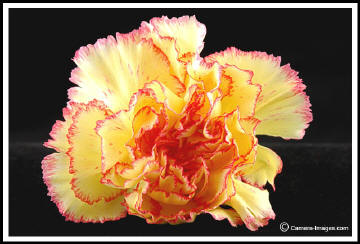|
Article
Colour Management Outlined
In this article I want to look specifically at
colour management as it impacts on white balance, rather than attempting to look
at all aspects of colour management, and so will not be looking at how to
calibrate items, just on the needs and effects.
To get good or accurate colours we need
to colour manage the entire process, having one part right and ignoring others
will not work and having things about right in each area leaves the sum of the
inaccuracies that will sometimes cancel out problems and give good results but
on other occasions add together and produce poor quality work.
| If an average photographer went out over 100
days they might expect to get exhibition prints on say 30 of them if they had
total control of technique, exposure and colour. However if only 1 in 10 days by
chance, they were to get the colour to work then they might expect to get 3
exhibition quality images. They will always get some by accident, but the
professional who is commissioned to undertake a job, has to return colour
correct images every day, and ideally most of their images should be technically
perfect, although time limits, light or what occurs may preclude them getting
exhibition work every day. Managing colour therefore is an important tool in
changing the odds. |
 
 Click on Image to see larger version
Click on Image to see larger version |
Colour management in digital photography has 3
main stages:-
-
White balance on the camera or a management
routine that uses targets or other forms to allow colour to be taken and
edited correctly.
-
Correctly profiled screen, you can't make
editing choices if what you see is not the image that you are going to get.
Screens should be re-profiled fairly regularly. Screens should be used under
consistent and suitable lighting conditions. Profiling is done with a low cost
device and software that anyone can manage.
-
Printers need accurate profiles produced for
the individual printer, ink and paper chosen. Downloaded standard profiles are
of little use. Profiles are produced by printing a special patch chart and
running it through a profiler to get the profile, some further adjustments are
also possible. As these profilers are far more expensive, and don't need to be
redone regularly there are other options, including post in profiling.
Although all are important, you do have some
leeway or recovery capability:-
-
Shooting in Raw format allows the white
balance to be changed afterwards to any of the settings except PRE.
-
If you do make a mistake, for example
leaving the camera on a PRE setting from a different light condition you can
batch process to another setting appropriate to the conditions.
-
Once you understand white balance fully you
have many more options, can design in changes or quickly correct any problem
you experience.
-
Providing you have good originals with good white balance you can always edit
the images again later.
The first stage of this process is the most
important, in that it is easier to re-edit to overcome later problems, than have
to re-shoot originals, and while we have a lot of scope to overcome white
balance problems, on occasions we would not want to have a plan of operation
that ignored it, with the objective of creating a lot of unnecessary work for us
later. Although we can correct things later, producing reasonable looking
results, we can't get accurate colours after if we didn't have the steps to do
it at the beginning. Often re-shooting is not an option, as in the case of
a wedding, and we may have to use other methods that allow you to
correct accurately after the event by using later reference shots.
We have the following articles on white
balance:-
|